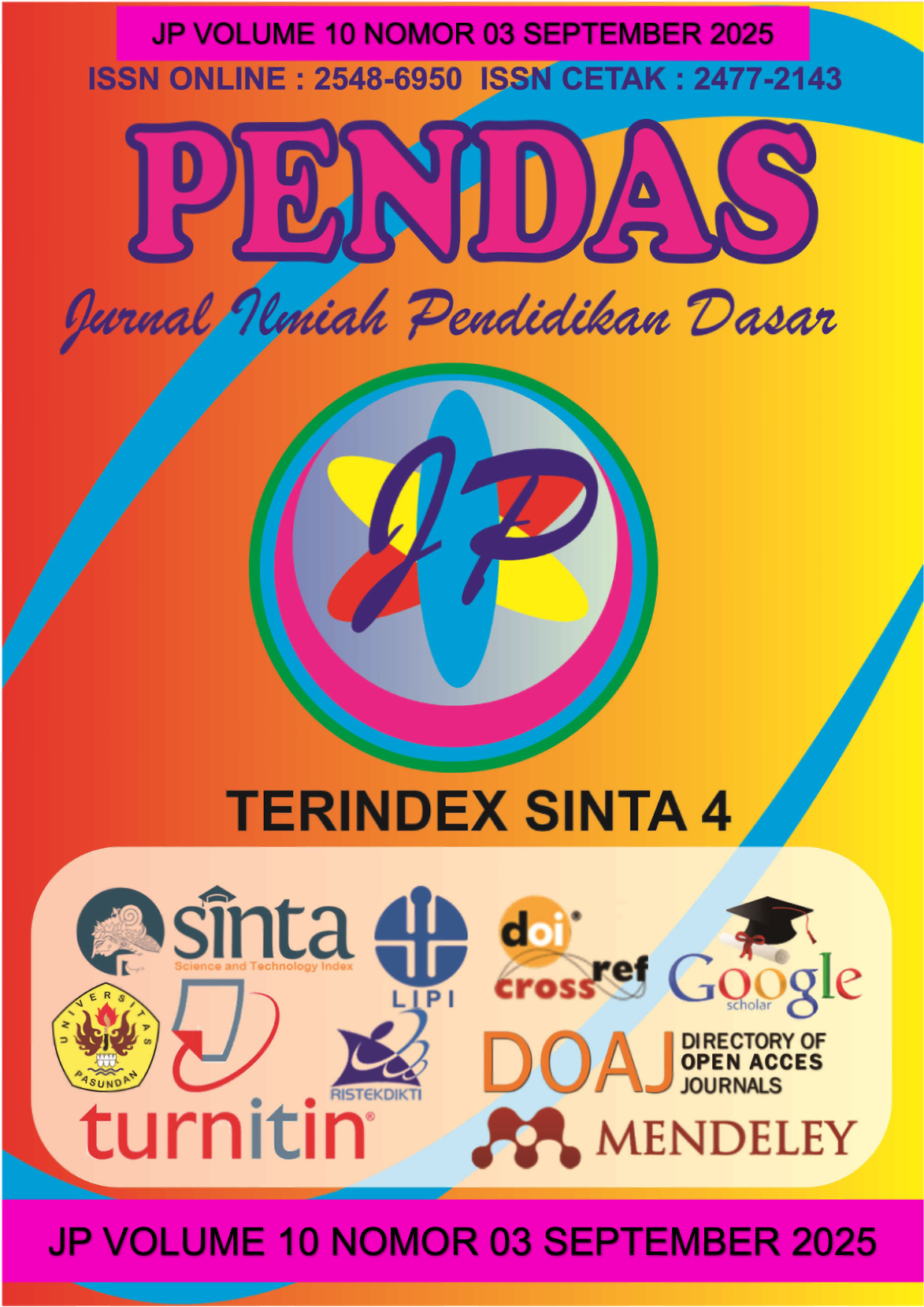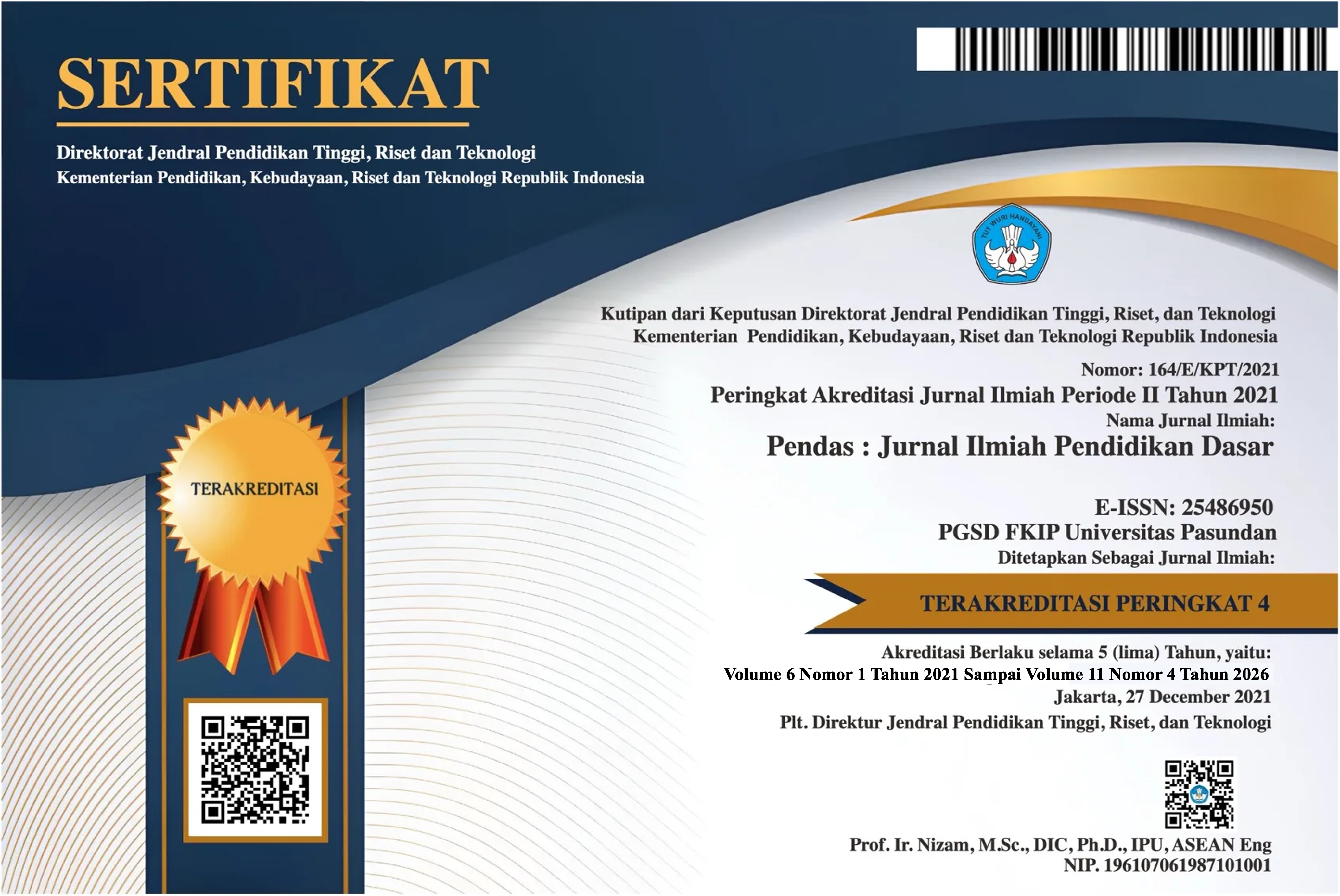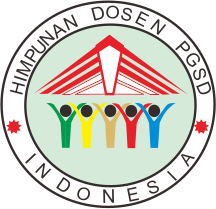PENGARUH PENGGUNAAN MEDIA PADLET TERHADAP AKTIVITAS BELAJAR SISWA GEOGRAFI FASE E DI SMAN 2 BATANG ANAI
DOI:
https://doi.org/10.23969/jp.v10i03.29477Keywords:
Padlet Media, Learning Activity, Geography, Digital Learning, Phase EAbstract
This study aims to determine the effect of using Padlet media on student learning activities in learning Geography in Phase E at SMAN 2 Batang Anai. The background of this research is based on the low involvement of students in the conventional learning process that tends to be monotonous and minimal media innovation. Padlet media, as an interactive digital platform, is expected to create a collaborative, fun learning atmosphere, and increase students' active participation. The method used in this research is quasi experiment with pretest-posttest control group design. The research sample consisted of two classes, namely the experimental class using Padlet media and the control class using the lecture method. Data collection techniques were conducted through student learning activity questionnaires, observation, and documentation. The instruments were tested for validity and reliability before being used in the research. The results of the analysis showed a significant difference in the level of student learning activities between the experimental and control classes. The learning activities of students who used Padlet media increased significantly compared to students who did not use the media. This proves that the use of Padlet media has a positive effect on increasing student learning activities in Geography subjects. This study concludes that Padlet media can be an effective alternative in increasing students' learning activities and is recommended to be applied more widely in digital-based learning in schools.
Downloads
References
Al-Fitrie, A. L., Solihatin, E., & Kustandi, C. (2023). Pengembangan Bahan Ajar Digital Vol. 12, No. 2, September 2024, hal. 855-867
Amer, N., Wan Mohamed, W. M., Wahidin, I. S., & Jaafar, R. E. (2024). Undergraduate students’ engagement: a case of Padlet. International Journal on E-Learning and Higher Education, 19(2), 417–432. https://doi.org/10.24191/ijelhe.v19n2.19225
Fitri, A. N., Rahmattullah, M., Nor, B., & Ratumbuysang, M. F. N. G. (2024). Pengembangan Media Pembelajaran Berbasis Aplikasi Padlet Pada Materi Inflasi Kelas XI SMA Negeri 6 Banjarmasin. Jurnal Pendidikan Ekonomi (JUPE), 12(1), 130-138.
Harsiwi, U. B., & Arini, L. D. D. (2020). Pengaruh Pembelajaran Menggunakan Media Pembelajaran Interaktif terhadap Hasil Belajar siswa di Sekolah Dasar. Jurnal Basicedu, 4(4), 1104–1113. https://doi.org/10.31004/basicedu.v4i4.505
Laksana, D. N. L., & Dhiu, K. D. (2021). Hakikat Perkembangan Anak Usia Dini. Aspek Perkembangan Anak Usia Dini, 1.
Nikmatussolihah, N., & Wahyudi, A. (2024). Pembelajaran Geografi Melalui Padlet Dalam Meningkatkan Aktivitas Dan Prestasi Siswa Kelas Xi Di Sman 1 Bululawang. Geography: Jurnal Kajian, Penelitian dan Pengembangan Pendidikan, 12(2), 855-867.
Steviani, D. S. (2020). Presentasi Interaktif Dalam Pembelajaran Daring. Ekasakti Jurnal Penelitian & Pengabdian, 1(1), 153–162.
Sugiyono. (2017). Metode Penelitian Kuantitatif, kualitatif, dan R&D. Bandung: Alfabeta, CV.
Surahmawan, A. N. I., Arumawati, D. Y., Palupi, L. R., Widyaningrum, R., & Cahyani, V. P. (2021). Penggunaan Media Wordwall sebagai Media Pembelajaran Sistem Pernafasan Manusia. PISCES : Proceeding of Integrative Science Education Seminar, 1(1), 95–105.
Widayati, Y. S. (2023). Penerapan Pembelajaran Diferensiasi Gaya Belajar Dengan Media Padlet Untuk Meningkatkan Aktivitas Belajar Siswa Kelas X Kuliner 3 Smk Negeri 2 Boyolangu. EDUTECH : Jurnal Inovasi Pendidikan Berbantuan Teknologi, 3(4), 221 230. https://doi.org/10.51878/edutech.v3i4.2604
Susanto, Ahmad 2013. Teori Belajar dan Pembelajaran di Sekolah Dasar. Jakarta: Kencana Pranadamedia Group.
Downloads
Published
Issue
Section
License
Copyright (c) 2025 Pendas : Jurnal Ilmiah Pendidikan Dasar

This work is licensed under a Creative Commons Attribution 4.0 International License.



















